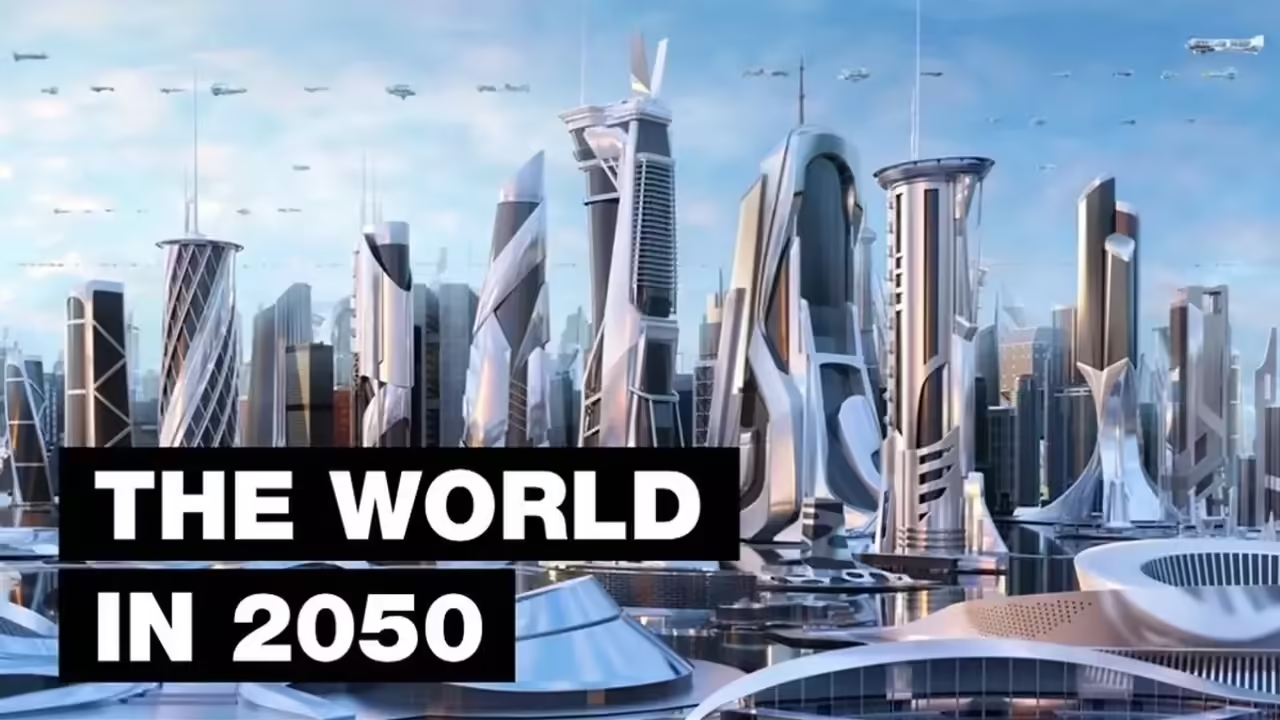
Over the course of the 21st century, we have witnessed unprecedented technological advancement that has radically transformed our lives. From the digital revolution to advances in artificial intelligence, each decade has brought new innovations that have changed the way we live, work and interact. In this article, we’ll explore 10 emerging technologies that are expected to have a significant impact on our lives this century.
Artificial Intelligence (AI):
AI has become an integral part of our society and will continue to transform our lives in the future. From virtual assistants to autonomous vehicles, AI is present in various applications. As technology advances, we will see even greater advances in areas like medicine, education, and industry.
Internet of Things (IoT):
The IoT refers to the interconnection of everyday devices over the Internet. This technology will allow greater automation and control of our homes and cities. From smart thermostats to smart cities, the IoT promises to improve efficiency and comfort in our daily lives.
Renewable energy and storage:
As climate change related issues become more urgent, renewable energy and storage technologies become crucial. Solar, wind, and other clean sources are gaining momentum and are expected to become major energy providers in the future.
Blockchain:
The blockchain is a distributed ledger technology that enables secure and transparent transactions. This technology has the potential to transform not only financial transactions, but also other industries, such as healthcare and supply chain.
Virtual reality (VR) and augmented reality (AR):
VR and AR have advanced considerably in recent years, and are expected to have a significant impact in fields such as entertainment, education, medicine, and design. These technologies will allow us to experience virtual worlds and overlay digital information on the real world.
3d print:
3D printing has revolutionized manufacturing by allowing the creation of three-dimensional objects by superimposing layers of material. This technology has the potential to personalize mass production and will change the way products are made in industries like medicine, architecture, and fashion.
Autonomous vehicles:
Autonomous vehicles are on their way to changing the transportation industry. Over time, we will see an increase in the adoption of driverless cars, which will improve road safety, reduce traffic congestion, and change the way we get around.
Synthetic biology and gene editing:
Synthetic biology and gene editing allow us to manipulate and design living organisms. These technologies have enormous potential in medicine, agriculture and biotechnology.
Quantum computing:
Quantum computing is a revolutionary technology that uses principles of quantum mechanics to perform calculations much faster and more complex than traditional computers. This technology promises significant advances in areas such as cryptography, algorithm optimization, and simulation of complex systems.
Advanced robotics:
Advanced robotics is transforming the way we interact with the world. From collaborative robots in manufacturing environments to assistive robots in healthcare, robotics is expanding the possibilities in various industries. As technology advances, we are likely to see smarter and more versatile robots play an even bigger role in our everyday lives.
Artificial Intelligence: The Power of Machine Learning
Artificial Intelligence (AI) has arrived to transform our world. At its core is machine learning, which allows machines to process data and learn from it without the need for direct programming.
Thanks to machine learning, we have seen impressive advances in several areas. AI algorithms have revolutionized speech recognition and natural language processing, leading to the creation of intelligent virtual assistants.
Computer vision has allowed machines to analyze images and video, finding applications in security, medicine, and manufacturing. Furthermore, AI has driven automation and robotics, improving efficiency and reducing errors in various industries.
Personalization and recommendations have also benefited from AI. Algorithms analyze our behavior patterns and preferences to offer content and services tailored to our needs.
Finally, AI plays a key role in the development of autonomous vehicles. Autonomous cars use sensors and AI algorithms to drive safely and efficiently.
AI is transforming our world, offering exciting opportunities in various industries. As technology advances, we must harness its power ethically and responsibly to ensure a future where learning machines improve our quality of life.
Internet of Things: Connecting the Physical and Digital World
The Internet of Things (IoT) has opened a new chapter in the way we interact with the world around us. This revolutionary technology is connecting everyday objects to the Internet, enabling communication and data collection in real time.
Device interconnection:
The IoT enables the interconnection of devices in a wide range of industries, from smart homes to smart cities. Home appliances, environmental sensors, medical devices and many others can communicate with each other, facilitating more efficient management and giving users convenience and control.
Monitoring and data collection:
The IoT provides the ability to monitor and collect data in real time. This is especially useful in areas such as healthcare, agriculture, and logistics, where sensors can capture relevant information to improve decision-making. For example, health monitoring devices can send medical data to doctors for more accurate tracking.
Process optimization and efficiency:
By connecting devices and collecting data, the IoT enables process optimization and improved efficiency. For example, in the manufacturing industry, sensors can track machine performance, predict failures, and optimize the supply chain in real time. This leads to more efficient production and cost reduction.
Smart cities:
The IoT is transforming cities into smarter and more sustainable environments. Sensors integrated into urban infrastructures, such as traffic lights, parking sensors and garbage containers, allow for more efficient management of resources and a better quality of life for citizens. Additionally, the IoT can help reduce traffic congestion and improve public safety.
Improvement of the quality of life:
The IoT is improving people’s quality of life by making it easier to automate and control various aspects of their environment. From smart thermostats that automatically adjust home temperatures to security devices that provide peace of mind, the IoT offers comfort, security, and convenience.
Innovation and new opportunities:
The IoT is driving innovation and creating new business opportunities in various sectors. From startups developing IoT solutions to established companies embracing IoT, the IoT is changing the way we do business and offers exciting possibilities for the future.
Virtual and Augmented Reality: A New Way to Experience Reality
Virtual Reality transports us to fully virtual environments through the use of viewers and motion tracking devices. From video games and simulations to educational and entertainment experiences, VR offers total immersion in virtual worlds that seem real. It allows you to explore remote places, go on exciting adventures, and experience situations in a whole new way.
Augmented Reality: The fusion between the real and the digital:
Augmented Reality superimposes digital elements, such as graphics, images or information, in the real world through devices such as smartphones, tablets or special glasses. This technology has revolutionized the way we interact with information and objects. From navigation and gaming apps to educational and design apps, AR enriches our perception of reality by adding layers of digital content.
Applications in industry and education:
VR and AR have a great impact in sectors such as industry and education. In industry, these technologies are used for personnel training, product design, and process simulation. In education, they offer visually engaging and immersive learning experiences, allowing students to explore complex concepts in a more interactive and hands-on way.
Change in the way of entertainment:
VR and AR are transforming the entertainment industry. VR video games provide a more immersive and exciting gaming experience, where players can feel like they are inside the game. In addition, AR has given rise to mobile games and applications that combine the real world with digital elements, creating new forms of interactive entertainment.
Applications in medicine and therapy:
VR and AR are also being used in the field of medicine and therapy. These technologies allow doctors and health professionals to simulate procedures, plan surgeries and improve the precision of treatments. In addition, VR applications are being explored in rehabilitation therapies and mental health disorders, giving patients immersive experiences that can aid in their recovery.
Autonomous Vehicles: The Future of Mobility
Autonomous vehicles are widely considered the future of mobility. These vehicles are capable of operating without human intervention, using a combination of technologies such as sensors, cameras, radar, and artificial intelligence systems to perceive their environment and make decisions in real time.
The adoption of autonomous vehicles promises to transform the way we get around and offers a number of potential benefits. One of the main benefits is the improvement of road safety. By removing the human factor from the equation, you significantly reduce the chances of human errors, such as distraction, tiredness or recklessness, which are responsible for the majority of traffic accidents.
In addition to safety, autonomous vehicles can also contribute to transport efficiency and comfort. By using advanced navigation systems and algorithms, autonomous vehicles can optimize routes and reduce traffic congestion. They also offer the potential to use travel time more productively, as passengers can work, rest or play while the vehicle does the driving.
Renewable energy: transforming the way we get energy
Renewable energy is playing a critical role in transforming the way we source energy. These energy sources are natural, inexhaustible, and have a lower amount of environmental impact compared to traditional fossil fuels.
Some of the most common forms of renewable energy include solar, wind, hydroelectric, geothermal, and biomass. These energy sources are obtained directly from nature and are constantly renewed, making them a sustainable and clean alternative to non-renewable fossil fuels.
Blockchain: The technology behind cryptocurrencies and beyond
Blockchain is a revolutionary technology that has gained recognition primarily for being the foundation of cryptocurrencies, such as Bitcoin and Ethereum. However, its potential goes beyond financial transactions and has applications in various fields.
At its core, the blockchain is a decentralized and distributed digital ledger that securely records and verifies transactions or events in a transparent manner. The hallmark of blockchain is its decentralized nature, which means that it is not controlled by a centralized authority, but is instead maintained and verified by a network of participants, known as nodes.
Blockchain transactions are grouped into blocks and added sequentially to a chain of blocks. Each block contains a reference to the previous block, thus forming an immutable chain of transactions. This makes the data stored on the blockchain highly secure and resistant to modification or manipulation.
Precision Medicine: Advances in Personalized Health Care
Precision medicine is an innovative approach in the field of health care that seeks to personalize the treatments and prevention of diseases taking into account the unique characteristics of each individual. It is based on understanding the genetic, molecular and environmental differences between patients to offer more precise and effective care.
Advances in precision medicine have been made possible by technological advances such as DNA sequencing, bioinformatics, and genomic medicine. These advances allow a deeper evaluation of the genetic information of individuals, which provides a more complete understanding of diseases and how they can be treated more effectively.
3D Printing: The Manufacturing Revolution
3D printing has emerged as a revolutionary technology in the field of manufacturing. Unlike traditional methods, which require material removal, 3D printing builds objects layer by layer from materials such as plastic, metal, or ceramic. This additive manufacturing capability offers significant benefits such as product customization, rapid prototyping, and cost reduction.
One of the most prominent advantages of 3D printing is its customization capacity. Objects can be designed and adapted according to individual needs, allowing the creation of unique and bespoke products. Additionally, 3D printing technology has simplified the rapid prototyping process. Designers and manufacturers can quickly create and refine working models and prototypes, accelerating product development and reducing time to market.
3D printing has also proven to be a cheaper solution compared to traditional manufacturing methods. By eliminating the need for expensive molds and tooling, the expenses associated with manufacturing are reduced. Additionally, 3D printing is an additive process, which minimizes material waste and contributes to more efficient and sustainable production. These aspects make 3D printing an attractive option for both small businesses and large manufacturers.
Nanotechnology: Building from the smallest level
Nanotechnology is a scientific and technological field that focuses on the manipulation of matter on an extremely small scale, at the level of atoms and molecules. By working at the nanometer scale, materials with unique properties and characteristics that differ from their larger-scale counterparts can be obtained.
This has led to significant advances in various fields such as electronics, medicine, energy, and materials science. From smaller, more powerful transistors in electronics, to targeted drug delivery systems in medicine, nanotechnology is opening up new possibilities for innovation and the development of more efficient and advanced technologies.
However, as the benefits of nanotechnology continue to be explored and reaped, the potential risks and challenges also need to be considered. The safety, regulation and proper management of nanomaterials are crucial aspects to guarantee their responsible use and minimize any negative impact on human health and the environment.
Through careful evaluation and proper supervision, nanotechnology has the potential to further revolutionize multiple industries and contribute to scientific and technological advancement for the benefit of society.







